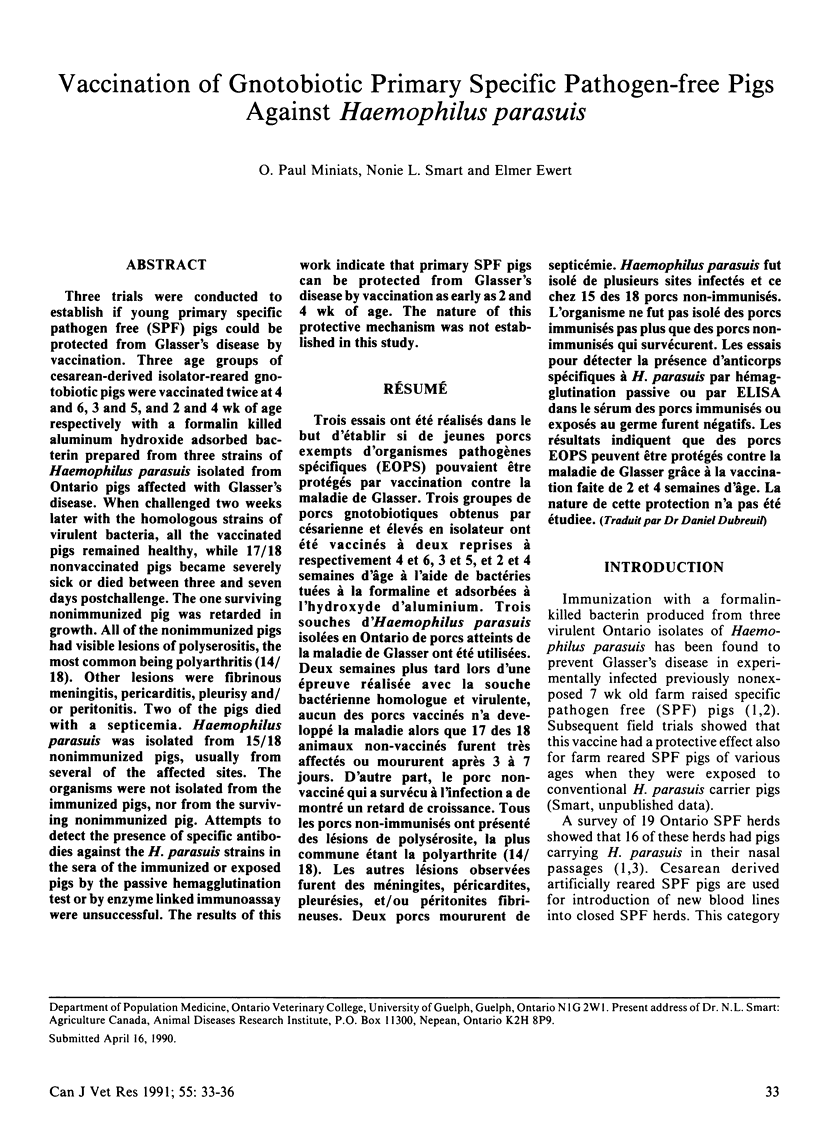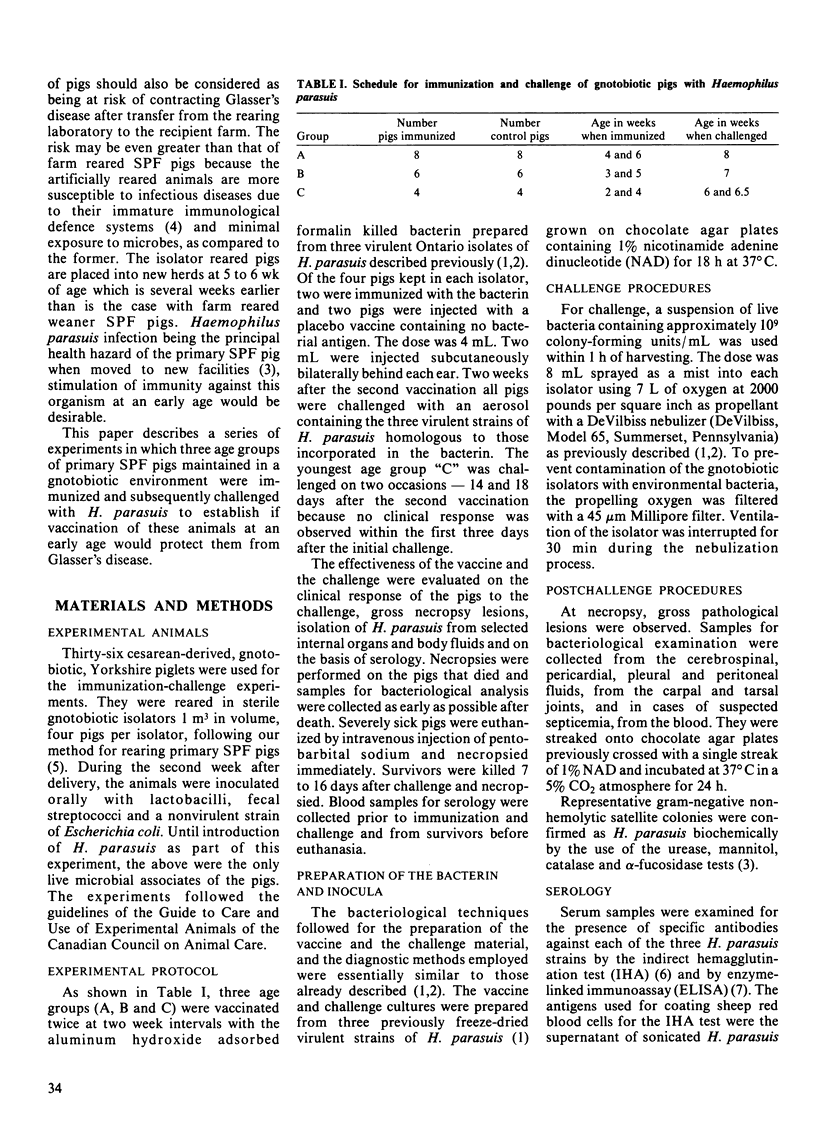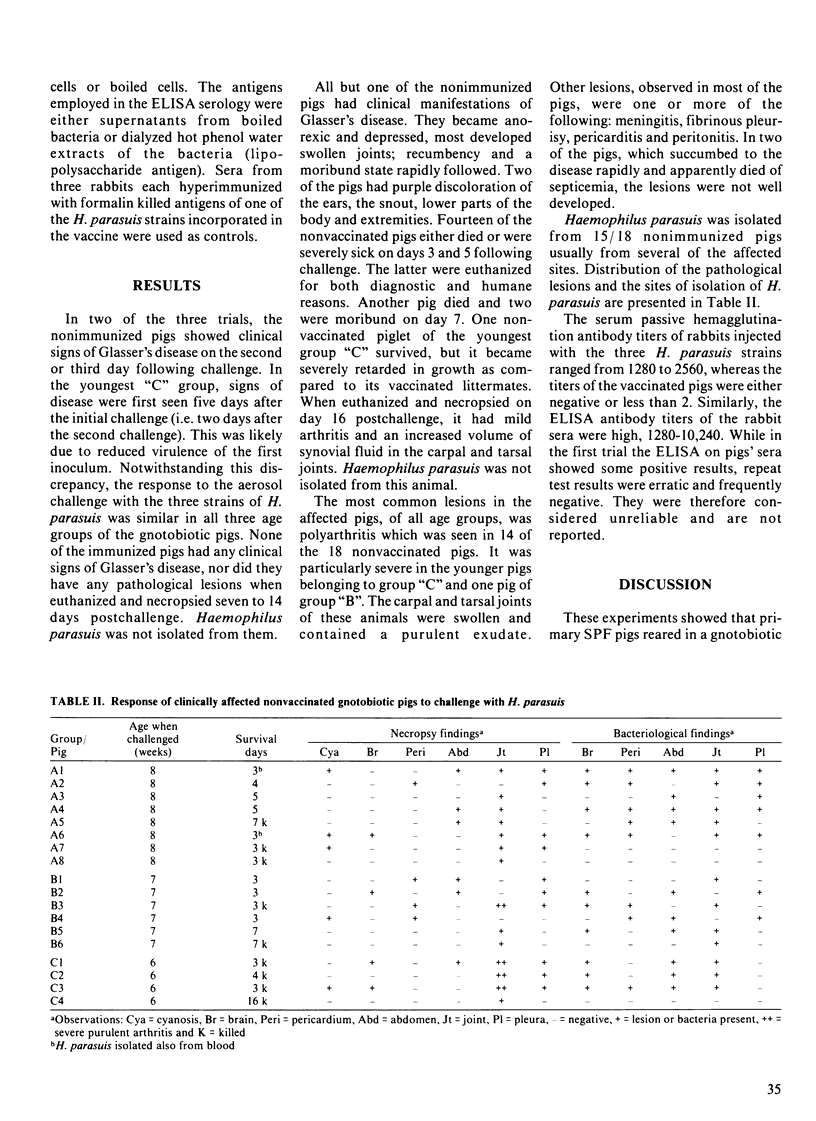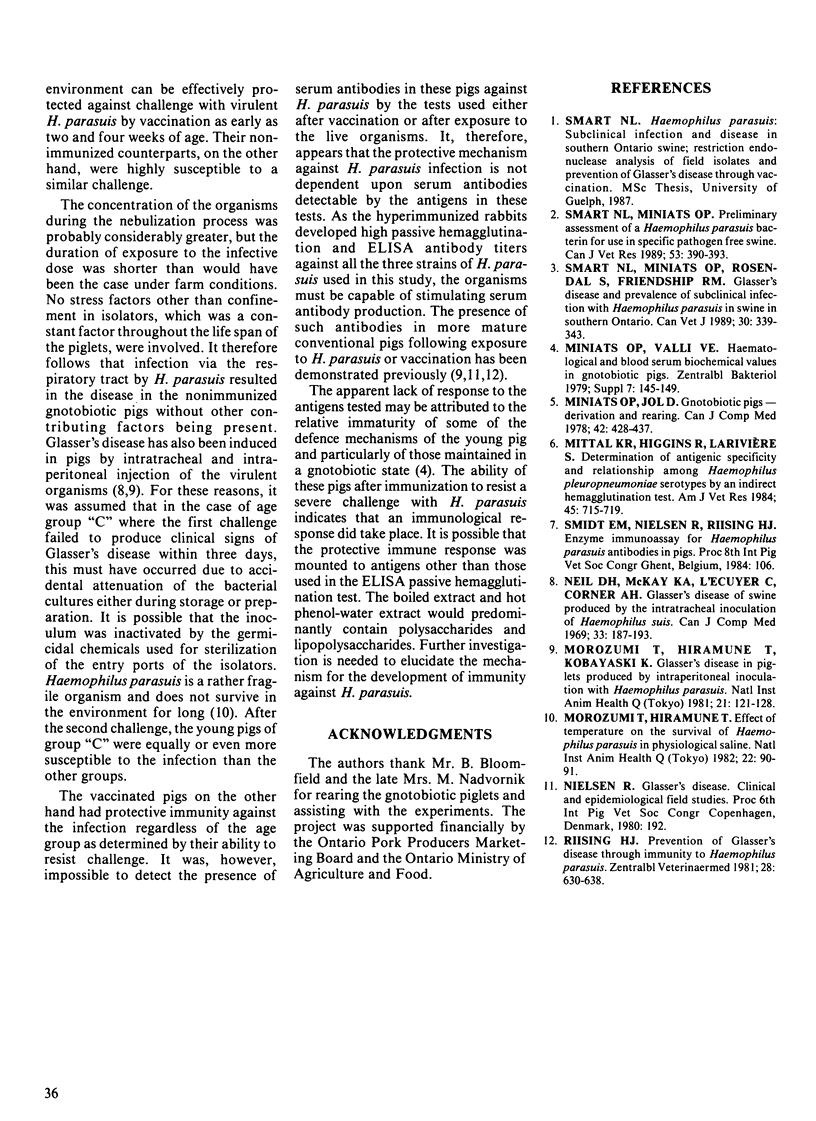Abstract
Three trials were conducted to establish if young primary specific pathogen free (SPF) pigs could be protected from Glasser's disease by vaccination. Three age groups of cesarean-derived isolator-reared gnotobiotic pigs were vaccinated twice at 4 and 6, 3 and 5, and 2 and 4 wk of age respectively with a formalin killed aluminum hydroxide adsorbed bacterin prepared from three strains of Haemophilus parasuis isolated from Ontario pigs affected with Glasser's disease. When challenged two weeks later with the homologous strains of virulent bacteria, all the vaccinated pigs remained healthy, while 17/18 nonvaccinated pigs became severely sick or died between three and seven days postchallenge. The one surviving nonimmunized pig was retarded in growth. All of the nonimmunized pigs had visible lesions of polyserositis, the most common being polyarthritis (14/18). Other lesions were fibrinous meningitis, pericarditis, pleurisy and/or peritonitis. Two of the pigs died with a septicemia. Haemophilus parasuis was isolated from 15/18 nonimmunized pigs, usually from several of the affected sites. The organisms were not isolated from the immunized pigs, nor from the surviving nonimmunized pig. Attempts to detect the presence of specific antibodies against the H. parasuis strains in the sera of the immunized or exposed pigs by the passive hemagglutination test or by enzyme linked immunoassay were unsuccessful. The results of this work indicate that primary SPF pigs can be protected from Glasser's disease by vaccination as early as 2 and 4 wk of age. The nature of this protective mechanism was not established in this study.
Full text
PDF



Selected References
These references are in PubMed. This may not be the complete list of references from this article.
- Miniats O. P., Jol D. Gnotobiotic pigs-derivation and rearing. Can J Comp Med. 1978 Oct;42(4):428–437. [PMC free article] [PubMed] [Google Scholar]
- Mittal K. R., Higgins R., Larivière S., Leblanc D. A 2-mercaptoethanol tube agglutination test for diagnosis of Haemophilus pleuropneumoniae infection in pigs. Am J Vet Res. 1984 Apr;45(4):715–719. [PubMed] [Google Scholar]
- Morozumi T., Hiramune T. Effect of temperature on the survival of Haemophilus parasuis in physiological saline. Natl Inst Anim Health Q (Tokyo) 1982 Summer;22(2):90–91. [PubMed] [Google Scholar]
- Morozumi T., Hiramune T., Kobayashi K. Glässer's disease in piglets produced by intraperitoneal inoculation with Haemophilus parasuis. Natl Inst Anim Health Q (Tokyo) 1981 Fall;21(3):121–128. [PubMed] [Google Scholar]
- Neil D. H., McKay K. A., L'Ecuyer C., Corner A. H. Glasser's disease of swine produced by the intracheal inoculation of haemophilus suis. Can J Comp Med. 1969 Jul;33(3):187–193. [PMC free article] [PubMed] [Google Scholar]
- Riising H. J. Prevention of Glässer's disease through immunity to Haemophilus parasuis. Zentralbl Veterinarmed B. 1981;28(8):630–638. doi: 10.1111/j.1439-0450.1981.tb01784.x. [DOI] [PubMed] [Google Scholar]
- Smart N. L., Miniats O. P. Preliminary assessment of a Haemophilus parasuis bacterin for use in specific pathogen free swine. Can J Vet Res. 1989 Oct;53(4):390–393. [PMC free article] [PubMed] [Google Scholar]
- Smart N. L., Miniats O. P., Rosendal S., Friendship R. M. Glasser's disease and prevalence of subclinical infection with Haemophilus parasuis in swine in southern Ontario. Can Vet J. 1989 Apr;30(4):339–343. [PMC free article] [PubMed] [Google Scholar]


